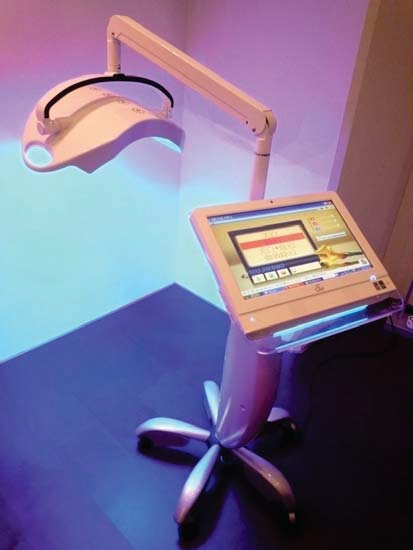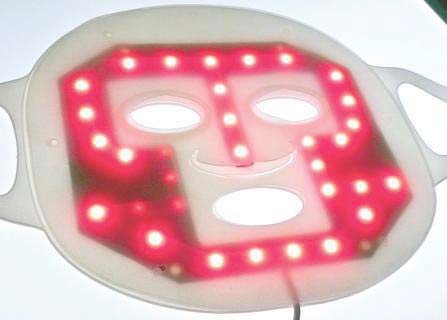Using LED light sources as a medium for light therapy devices can stimulate the human body’s metabolism rate and greatly reduce medical risks associated to conventional light therapy, such as laser and intense pulse light, said Simon Gau, President of Liverage Biomedical during LEDforum Taipei 2013. Gau was a guest speaker at the forum organized by LEDinside, which runs from Oct. 16-17 at Evergreen International Convention Center in Taipei, Taiwan.
Since LED light therapy was approved by U.S. Food and Drug Administration in 2005, it has become the global new beauty rave, said Gau. LED light therapy has been used to revitalize, regenerate, and rebuild skin. Liverage Biomedical led by Gau tried to enter the LED lighting industry six to seven years ago, but due to the large market scale it was difficult for average SMEs to enter. With the help of a friend from Chinese Society of Cosmetic Surgery and Anti-Aging Medicine, Gau began researching LED light therapy applications in cosmetic surgery. After three year of clinical trials, Liverage Biomedical was finally officially established this year. The company was approved to set up in Hsinchu Biomedical Park.
 |
|
Liverage Biomedical's LED light therapy device. (Photo Courtesy of Liverage Biomedical) |
Liverage Biomedical is different from most companies in the LED industry that is after large volumes and high profits, said Gau. The company is looking at LED cosmetic surgery applications as a long term plan. “We are not making products, but are making creations that can be replicated,” said Gau. Creation here is referred to a comprehensive cosmetic surgery therapy that can be replicated, but adjusted to each patient’s condition during execution. Every patient is a unique case.
LED weaker light source does not directly cause damage or regeneration of skin tissue is the biggest difference that sets it apart from LED light therapy and conventional light. LED light therapy uses photochemical reactions to stimulate the body’s natural metabolism to remove pimples, lighten blemishes, whiten skin, reduce pores and peel skin. However, due to its weaker light source, LED light therapy period is much longer than conventional light therapies, even as long as three months. Taking advantages of LED light therapy’s low medical risk characteristics to improve therapy safety the company has upgraded light therapy to reduce side effects. On the other hand, the company has sought suitable medicine to speed up the therapy period. Currently, the company has developed a light therapy that can be completed within one month. Working within the skin’s regeneration period of 21 days, the product is likely to become a therapeutic product with market prospects.
 |
|
Liverage Biomedical LED light therapy mask. (Photo Courtesy of Liverage Biomedical) |
The company has developed a LED light therapy device and face mask. The former product is targeted at beauty clinics and related research organizations. According to the patient’s needs, the light source can be adjusted for light surgery. The face mask on the other hand is used for personal skin maintenance, which can be directly applied after LED light therapy. In the long run, skin conditions can be improved greatly by combining light therapy with suitable diet and lifestyle. The LED face mask has received Taiwan’s Food and Drug Administration Ministry approval. The company is preparing to promote the mask, which will be priced below NT$10,000 (US$ 340.08). However, still about 30 percent of users might have dry skin, or slight allergic reactions from light stimulation after light therapy or using LED face mask, said Gau. However, since LED light therapy is very safe, skin damage can almost be completely avoided with proper moisturizers.
High medical safety is applied to LED light therapy applications and related products. LED light therapy is not after huge profits or mass production, but is focused on strictly controlling wavelength and light energy. The LED industry has very high penetration rate, any industry can be penetrated including medicine. In stark comparison to average LED companies chase after profit and production volume, cosmetic surgery applications is focused on precise control. Another development direction for LED industry to consider.













